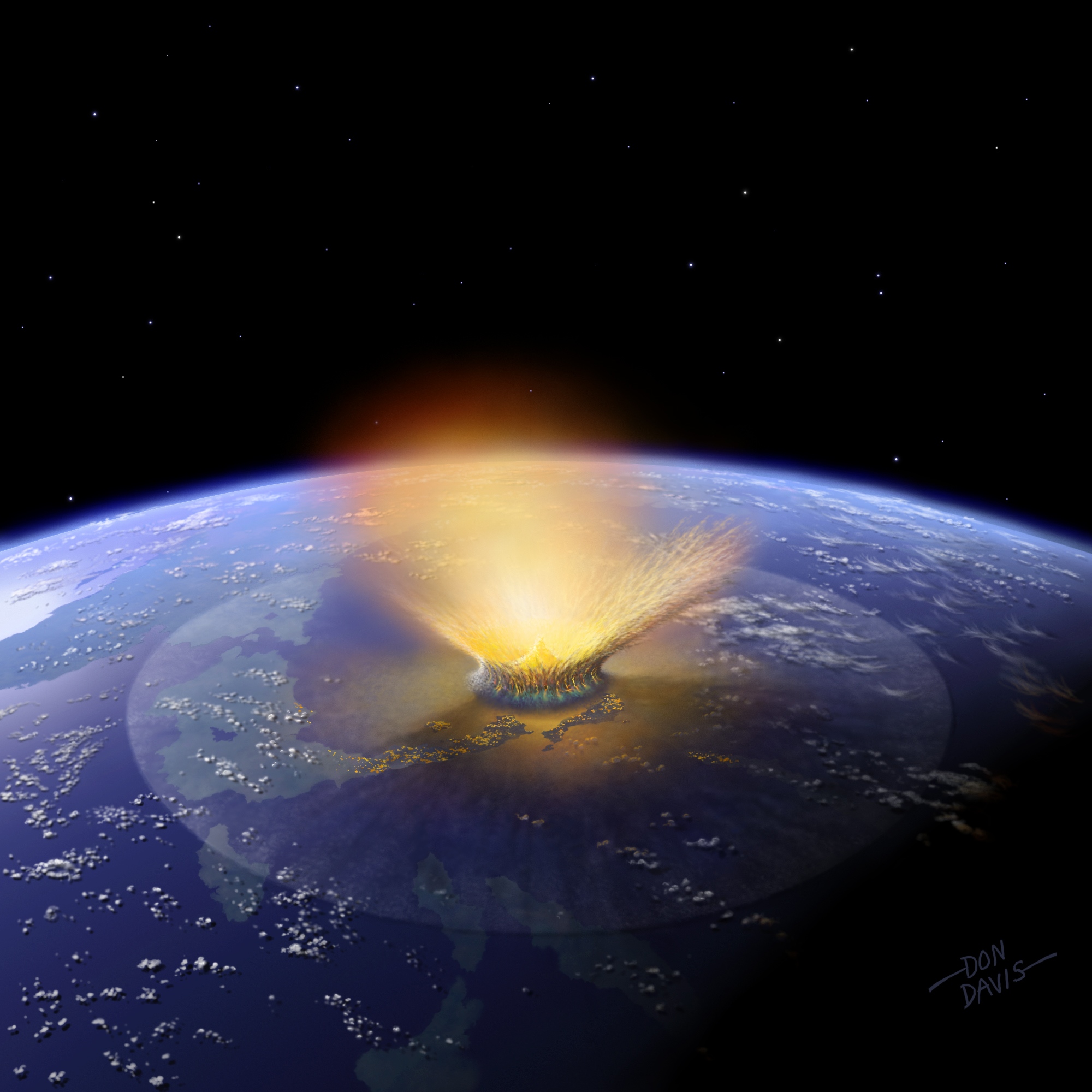Dinosaur-Killing Comet Didn't Wipe Out Freshwater Species

The cosmic impact that ended the age of dinosaurs killed many living creatures on land and in the sea, but scientists have found, puzzlingly, that life in freshwater largely escaped this fate.
Now new research, detailed online July 11 in the Journal of Geophysical Research-Biogeosciences, suggests freshwater life survived extinction because they were better adapted to withstand rapid changes in their surroundings, which helped them outlast the crises in the wake of the catastrophe.
The mass extinction event the scientists studied (also the most recent and most familiar) is known as the K-T event or, more recently, the K-Pg event. The disaster, which killed off at least 75 percent of all species on Earth, including all dinosaurs except for birds, was apparently triggered by a cosmic impact that occurred in what is now Mexico about 65 million years ago. [Wipe Out: History's Most Mysterious Extinctions]
Past research suggested that while marine life was devastated by this mass extinction, freshwater organisms underwent relatively low extinction rates. Now investigators suggest the secret of their survival may have been all the variability experienced by freshwater life.
Gimme shelter
Water would have helped shelter life in rivers and lakes, as well as the seas and oceans, from the initial blast of heat from the cosmic impact. However, the giant extraterrestrial collision set fire to Earth's surface, darkening the sky with dust and ash that cooled the planet. The resulting "impact winter" and its lack of sunlight would have crippled both freshwater and marine food chains by killing off microscopic photosynthetic organisms known as phytoplankton that are at the base of the marine and freshwater food chains.
Intriguingly, while marine communities were devastated by the mass extinction, losing 50 percent of their species, geophysicist Douglas Robertson at the University of Colorado at Boulder and his colleagues looked at a database of western North America fossils and discovered freshwater ones there survived relatively unscathed, losing only about 10 percent of their species.
Get the world’s most fascinating discoveries delivered straight to your inbox.
The researchers note that freshwater organisms, unlike marine life, are used to annual freezes that ice over inland waters, severely limiting their oxygen supplies. As such, freshwater communities might have better endured the low oxygen levels in the wake of the death of photosynthetic life following an impact winter. (Photosynthetic life generates virtually all the oxygen in the atmosphere, and needs light to live, and the impact winter would have significantly reduced the amount of sunlight reaching Earth.)
Impact winter
Inland waters could also benefit from influxes of nutrients from water seeping in from nearby soils laden with organic matter. Moreover, such groundwater could also be warm, pumping a welcome amount of heat into impact-winter-cooled freshwater. In contrast, while marine coasts might also experience some benefit from warm groundwater, the vast majority of the ocean would not.
In addition, many freshwater organisms can go dormant, including eggs or adults buried in the mud. This would have enabled them to await the return of friendlier conditions, the researchers said.
All these adaptations may have helped freshwater life hold on for the six months to two years it would have taken until the sky cleared from the impact winter. Although the impact event likely killed off many freshwater organisms as well, "for a species to survive, you need only a small number of surviving individuals, an absolute minimum of two individuals at the extreme limit," Robertson told LiveScience. "Look at what a couple of rabbits were able to do in Australia in a few decades." Rabbits, first brought to Australia as food in the 18th century, swarmed uncontrollably across the continent, once teeming in the billions.
Editor's note: This story was updated to note where the new research was published.
Follow us @livescience, Facebook & Google+. Original article on LiveScience.com.



